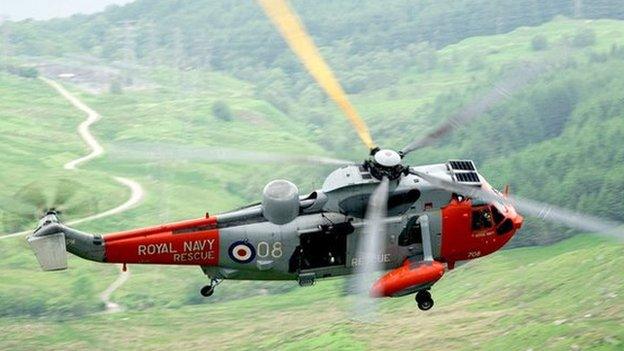Sea King flight bids Scotland farewell
- Published
The Royal Navy's Sea King helicopters mark the end of their search and rescue missions in Scotland with a final flypast
HMS Gannet's search and rescue helicopters have made a final farewell flypast of Scotland.
Royal Navy Sea Kings have been involved in thousands of rescues since the first unit was established 44 years ago.
But the service was replaced by a civilian team at Prestwick Airport on 1 January, bringing an end to military search and rescue in Scotland.
The Sea Kings flew over the scene of many past rescues and started from Prestwick at 10:00.
Two helicopters in formation flew up Loch Lomond, passing over Tyndrum and then through Glen Coe and over Ben Nevis.
The Royal Navy's Sea King helicopters begin their final flypast to mark the end of their search and rescue missions in Scotland
The crews then followed the west coast down to Oban before flying over Inverlochlarig, Stirling, Edinburgh, Ayr and finally Troon, finishing at about 14:30.
Bristow Helicopters will eventually operate 10 search and rescue helicopter bases in the UK on behalf of HM Coastguard, a section of the Maritime and Coastguard Agency (MCA).
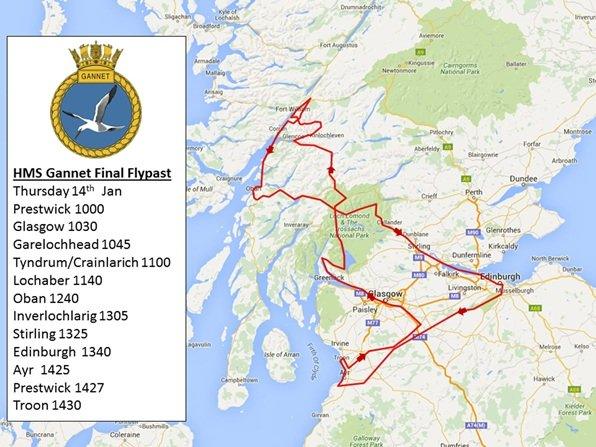
The company was awarded the contract after a decision to privatise search and rescue in 2013.
The first of the UK bases operated by Bristow, including Inverness, became operational last year. The final UK base will be up and running by 2017.
Lieutenant Commander Charlie Fuller, the commanding officer of HMS Gannet, said: "Over the years HMS Gannet has enjoyed immense support from communities the length and breadth of Scotland.
"The flypast is our chance to say farewell and hopefully people will come out to wave goodbye too."
Recording from Sea King helicopter after Rest and Be Thankful crash
During 2015, HMS Gannet was the busiest search and rescue flight in the UK, completing more than 300 rescues. The unit also holds the record for the most rescues in one year, with 447 rescues around the country in 2009.
The helicopter was busy right up to the handover to Bristows earlier this month and was called to help during the flooding on 30 December, airlifting 12 people trapped on a bus caught in floodwater near Girvan, South Ayrshire.
HMS Gannet said its final day of operations on 31 December was "relatively routine", with the Sea King crew flying a casualty from the Isle of Rum to Glasgow University Hospital for treatment and assisting the police in the Invergarry area in the afternoon.
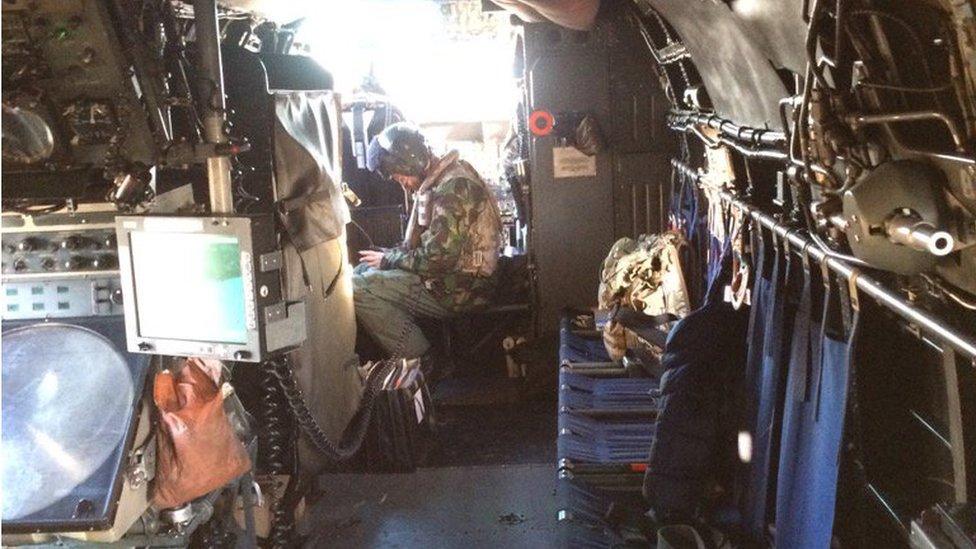
A BBC crew is flying with one of the helicopters
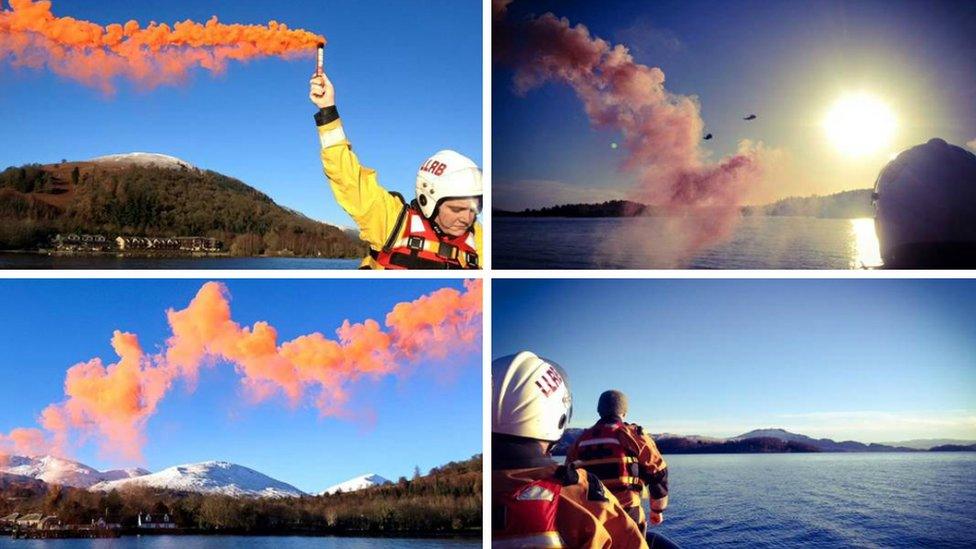
The Sea Kings, operated by the Navy from HMS Gannet and the RAF from Lossiemouth, were a familiar sight in the skies over Scotland since the 1970s. They were brought into service here during the Cold War in case pilots defending the UK from Scottish bases had to ditch into the North Sea.
As well as being involved with rescues in the mountains and at sea, they were often used to transport patients from the islands and other isolated areas of Scotland.
They worked with police and civilian mountain rescue teams. The HMS Gannet flight was known by its call sign "Navy 177", which changed to "Rescue 177" after being "tasked" on a job.
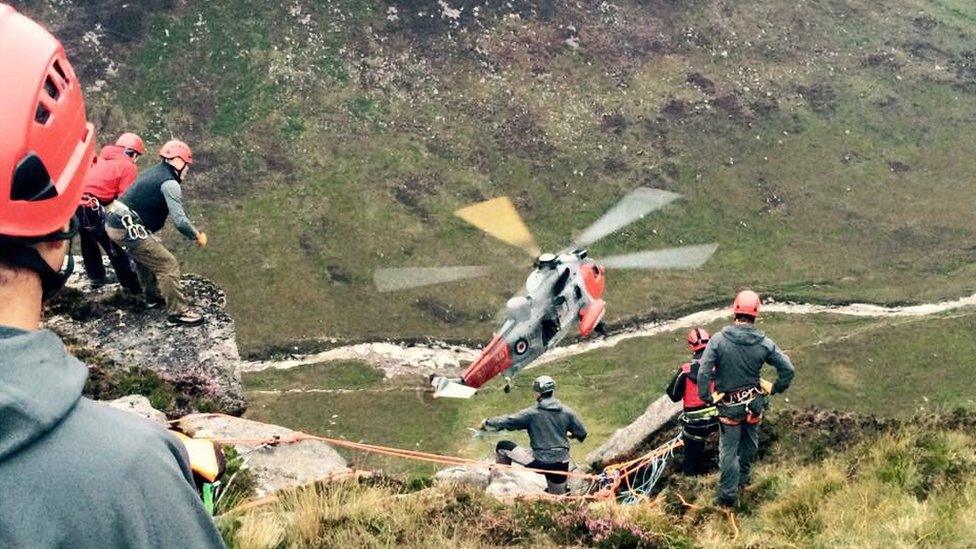
Last year, the Sea King from HMS Gannet helped rescue a paraglider who crashed near Catacol on Arran
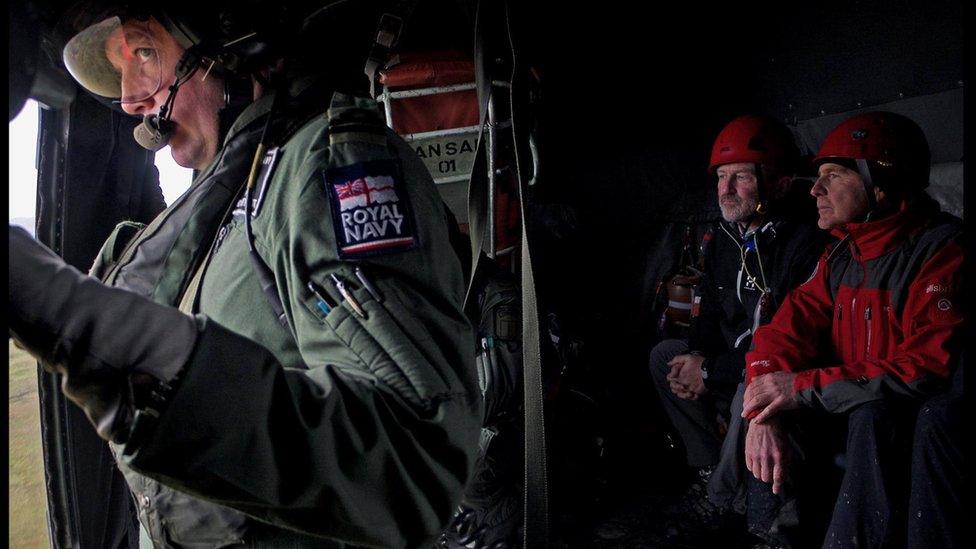
The Sea King crews worked closely with civilian mountain rescue teams
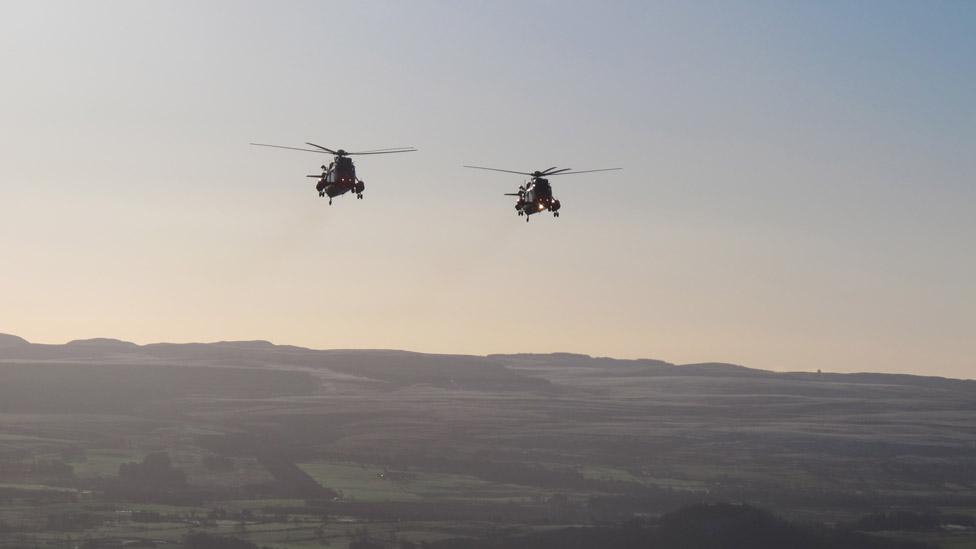
Two Royal Navy Sea Kings from HMS Gannet flew in formation for the flypast
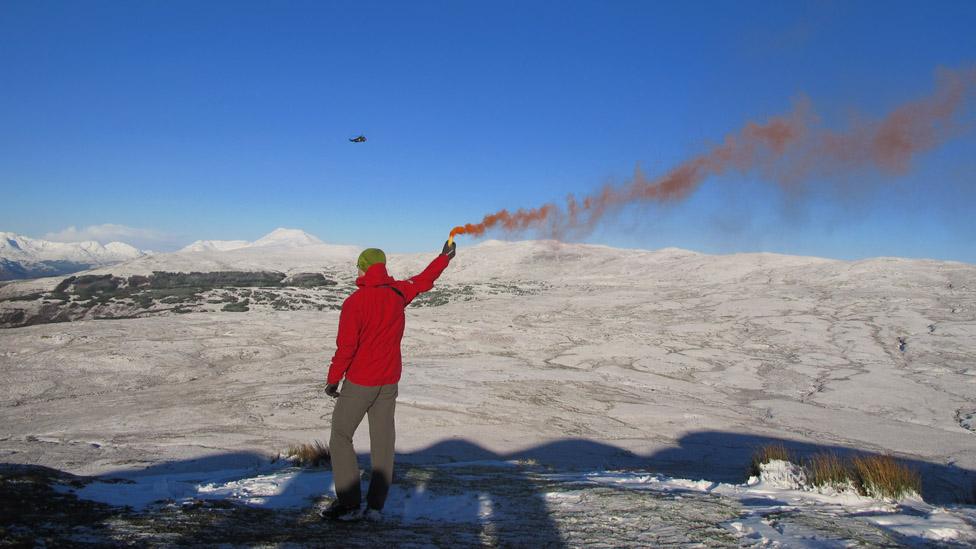
Members of Lomond Mountain Rescue Team set off smoke flares as a tribute to the crews
Rescue teams in Oban, Arrochar, Lomond, Glencoe and Lochaber stationed themselves along the route to wave farewell to the Navy Sea Kings.
As the helicopters flew past in close formation, members of the Lomond rescue team set off smoke flares on the summit of Conic Hill as a tribute to the crews.
Deputy team leader Jan Miller, who has worked with mountain rescue and with search and rescue dogs for 30 years, said it was an emotional moment to say goodbye the helicopters.
She told the BBC: "Trying to get in and out of a Sea King helicopter with a search dog is quite some feat and it's always been amazing to me how helpful, calm and compassionate the crews of the helicopters have been."
Ms Miller said that the flypast marked the "end of an era".
"It was absolutely superb seeing them in formation like that and being able to speak to them on the radio one last time. They really have done the rescue and the military service proud."
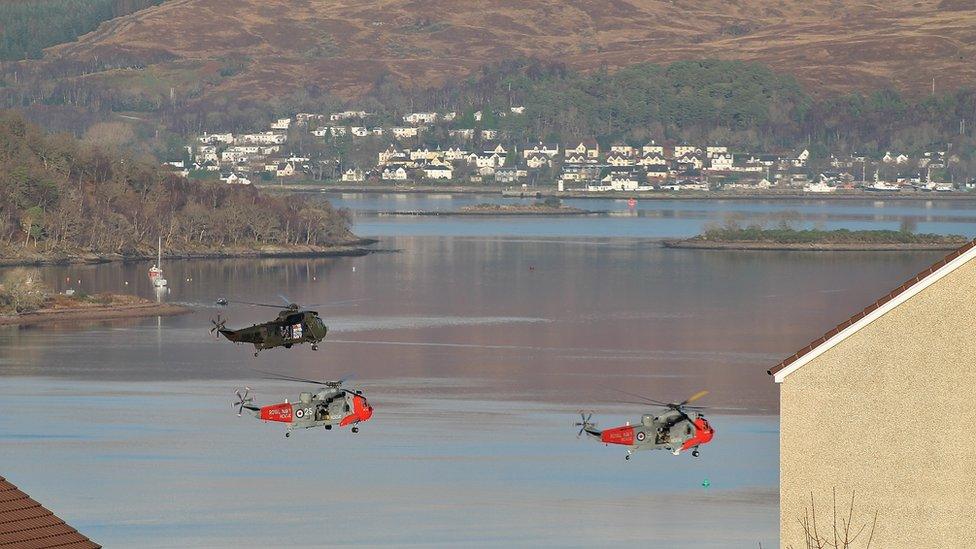
The most northerly point of the fly past was Fort William
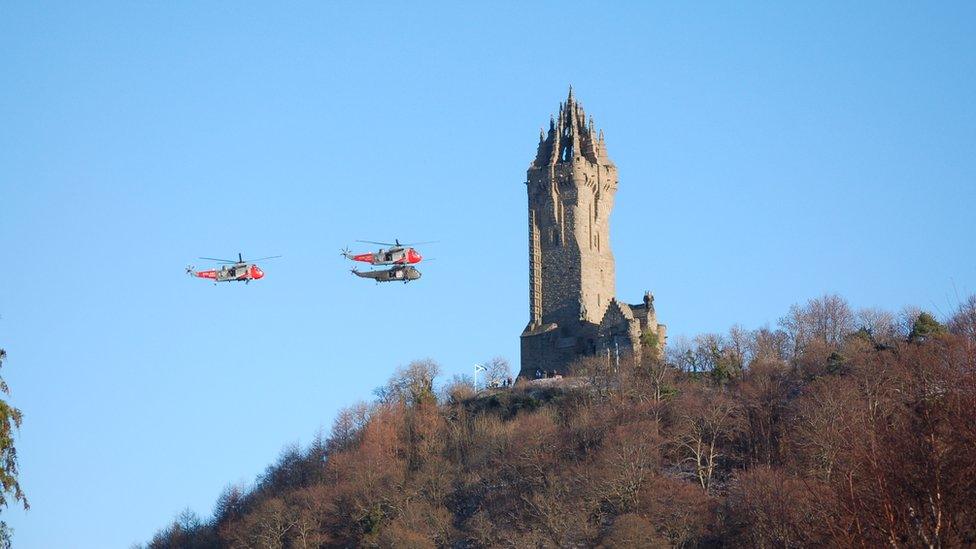
The helicopters flew with the callsign "Broadsword Formation" - seen here near the Wallace Monument, Stirling
- Published1 January 2016
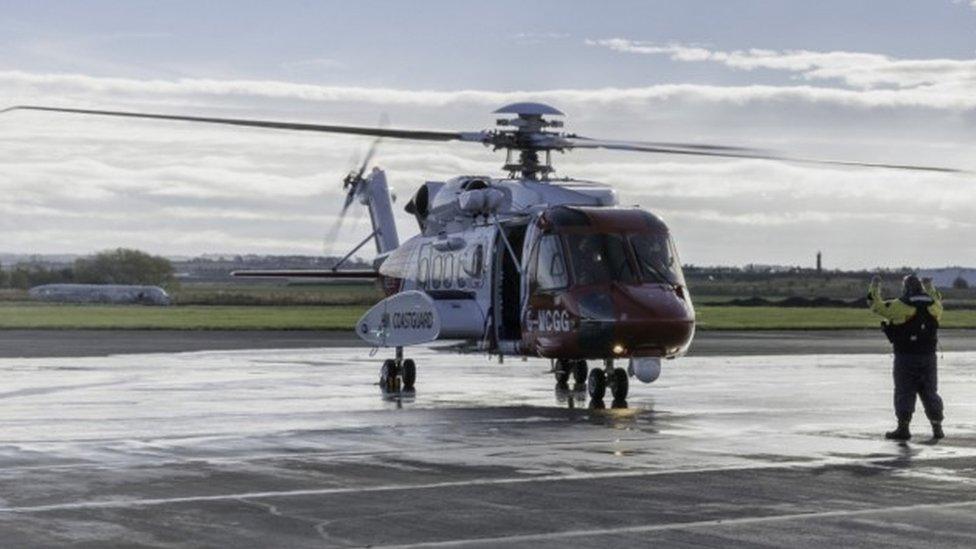
- Published17 March 2015
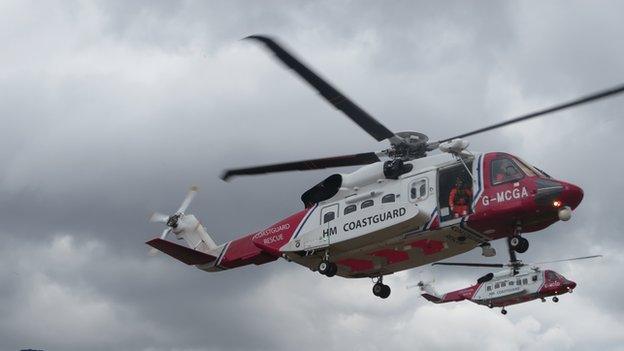
- Published10 February 2014
